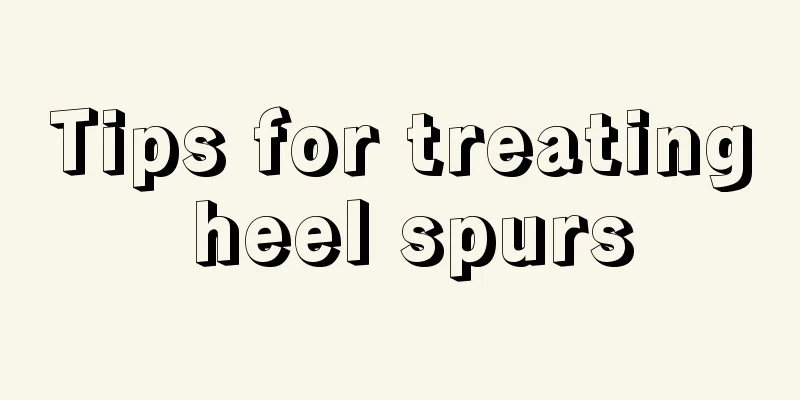Reasons why the knee joint cannot bend

|
The knee is an important part of the human body. When a knee disease occurs, the symptoms are complex. However, if there are problems with the structure of the knee, such as knee pain, or the inability to bend or straighten the knee normally, these are serious conditions. It will definitely affect people's normal life, and this problem should be treated in time. For example, using plasters for treatment or taking medication. But what are the reasons why the knee joint cannot bend? 1. Osteoarthritis of the knee Knee pain and inability to bend may be caused by knee osteoarthritis. Osteoarthritis of the knee joint mostly occurs in middle-aged and elderly people. Its symptoms include redness, swelling and pain in the knee, pain when going up and down stairs, and knee soreness and discomfort when sitting, standing or walking. Some patients may also experience swelling, popping, fluid accumulation, etc. If not treated in time, it will cause joint deformity and disability. Recommendation: First, you need to change the causes of knee arthritis, keep your knees warm, change bad posture, lose weight, and avoid knee fatigue. The second step is treatment, which can be done with chondroprotective agents, arthroscopy, etc. 2. Bone hyperplasia Bone hyperplasia is also one of the reasons that cause knee pain and inability to bend. Patients of hyperplastic osteoarthritis caused by bone hyperplasia are usually middle-aged and elderly people over 50 years old. The affected joints may have persistent dull pain, which worsens with increased activity and improves after rest. The pain is usually mild but worsens with lower air pressure and is associated with changes in climate. Recommendation: Patients with bone hyperplasia should reduce the weight load on the joints and excessive large-scale activities, take care of the diseased joints, and delay the progression of the disease. Obese people should lose weight to reduce the load on the joints and delay the development of the disease. During the acute attack period, you can take anti-inflammatory and analgesic drugs in appropriate amounts, and treatment can be carried out using chondroprotective agents, artificial joint replacement surgery, etc. 3. Knee meniscus injury Knee pain and inability to bend may also be caused by meniscus injury in the knee joint. Most cases of meniscus injury of the knee joint have a history of obvious trauma. In the acute phase, there is obvious pain, swelling and effusion in the knee joint, and joint flexion and extension are impaired. After the acute phase, the swelling and effusion may subside on their own, but the joints still hurt during activities, especially when going up and down stairs, up and down hills, squatting and standing up, running, jumping, etc. The pain is more obvious. In severe cases, there may be limping or flexion and extension dysfunction. Some patients have locking phenomenon or clicking when the knee joint is flexed and extended. Recommendation: If you have a history of trauma and experience knee pain and inability to bend, it is recommended that you go to the hospital for X-ray and knee arthroscopy. After a confirmed diagnosis, follow the doctor's advice for treatment to avoid delaying treatment. 4Knee ligament injury Knee pain and inability to bend may also be caused by knee ligament damage. The stability of the knee joint is relatively poor when it is slightly flexed. If it is suddenly subjected to external force and causes eversion or inversion at this time, it may cause injury to the medial or lateral collateral ligament. Clinically, medial collateral ligament injuries account for the vast majority. Taking this type of injury as an example, the patient will have a clear history of trauma, pain and tenderness on the medial side of the knee joint, the pain will be aggravated when the calf is passively abducted, there will be swelling on the medial side of the knee, ecchymosis will appear after a few days, the movement of the knee joint will be restricted, and it will be difficult to bend. Recommendation: If the ligament is partially ruptured, the knee joint can be fixed with an anterior and posterior plaster brace and the plaster brace can be removed after 6 weeks. By practicing knee flexion and extension, its function can be gradually restored. If the ligament is completely ruptured, it needs to be repaired and then fixed with plaster. |
<<: The ring finger is bent and cannot be straightened
Recommend
Tonsils and adenoids
The difference between tonsils and adenoids usual...
What are the clinical manifestations of septic shock?
Septic shock is a non-infectious disease, also kn...
Do decayed deciduous teeth need to be filled?
We have all experienced the period of tooth repla...
Sometimes I have a slight pain in my chest on the right side
Everyone knows that we all face great pressure in...
TNM staging of nasopharyngeal carcinoma
In order to develop a reasonable treatment plan, ...
Does stage 1b gastric cancer affect life expectancy?
Stage 1b gastric cancer may affect life expectanc...
Does occult blood in urine mean nephritis? Does occult blood in urine mean nephritis?
In medicine, occult blood in urine mainly refers ...
Self-driving in Tibet necessities
In recent years, self-driving tours have become p...
What is the best combination of honey for facial mask
Facial mask is an indispensable beauty product in...
What are the dangers of prostate cancer?
Most men know that prostate cancer is a very scar...
What are the symptoms of lung cancer? Four common symptoms of lung cancer patients
The early symptoms of lung cancer are not very ob...
How to diagnose laryngeal cancer early
Methods for early diagnosis of laryngeal cancer i...
What are the diagnostic criteria for pancreatic cancer
The diagnostic methods for pancreatic cancer incl...
Why do I urinate so frequently?
Urinating is a very normal metabolic function of ...
Are black raised moles dangerous?
The body structure is very complex. Many times, s...









